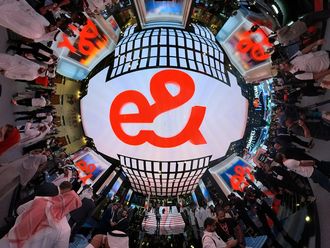![Copy of 2023-03-03T140003Z_697613002_RC2CMZ9Y1MNI_RTRMADP_3_PRIVATE-EQUITY-DIRECT-LENDING [1]-1678020597643](https://imagevars.gulfnews.com/2023/03/05/Copy-of-2023-03-03T140003Z_697613002_RC2CMZ9Y1MNI_RTRMADP_3_PRIVATE-EQUITY-DIRECT-LENDING--1--1678020597643_186b1d2579c_medium.jpg)
New York: Private credit is going places that big banks wouldn’t dare.
In the race to win debt deals that fund leveraged buyouts, direct-lending firms are in discussions to deploy one of the more unusual tools of finance: allowing a company to pay interest by taking on additional debt.
It’s a rare structure for a big new buyout deal, which are normally financed by banks arranging high-yield bonds and leveraged loans and sold to institutional investors. For those watching the rapid growth of private credit, in which investment firms bypass banks by arranging loans directly, it highlights the degree to which the industry is able to combine heft and flexibility to upend how multibillion-dollar deals are traditionally put together.
Wall Street heavyweights
The payment-in-kind option for part of the loan, known as a PIK feature, is an arrangement being considered by private credit lenders including Apollo Global Management Inc., Blackstone Inc. and Oaktree Capital Management. The group is in competition with banks for the $5.5 billion debt backing the takeover of health-care technology firm Cotiviti Inc.
While it’s possible the PIK option won’t happen for this deal, their ability to quickly offer more appealing options, in this case a very borrower-friendly concession, is partly why private credit has been so successful in taking business away from Wall Street heavyweights.
Banks, on the other hand, are in a weaker position. They have been saddled with deals they underwrote before credit markets tumbled last year. That’s left them struggling to offload the debt to institutional investors that became more bearish and made it more challenging to compete with terms being offered by private lenders.
US leveraged loan prices plunged to about 92 cents on the dollar last year, from near par at the start of 2022. Those prices started to rebound this year, and if that were to continue, it would ultimately allow banks to once again regain a competitive edge.
But for now, what was once their winning tactic “- the ability to corral lots of investors in the market and put their balance sheet at risk “- is now their disadvantage.












